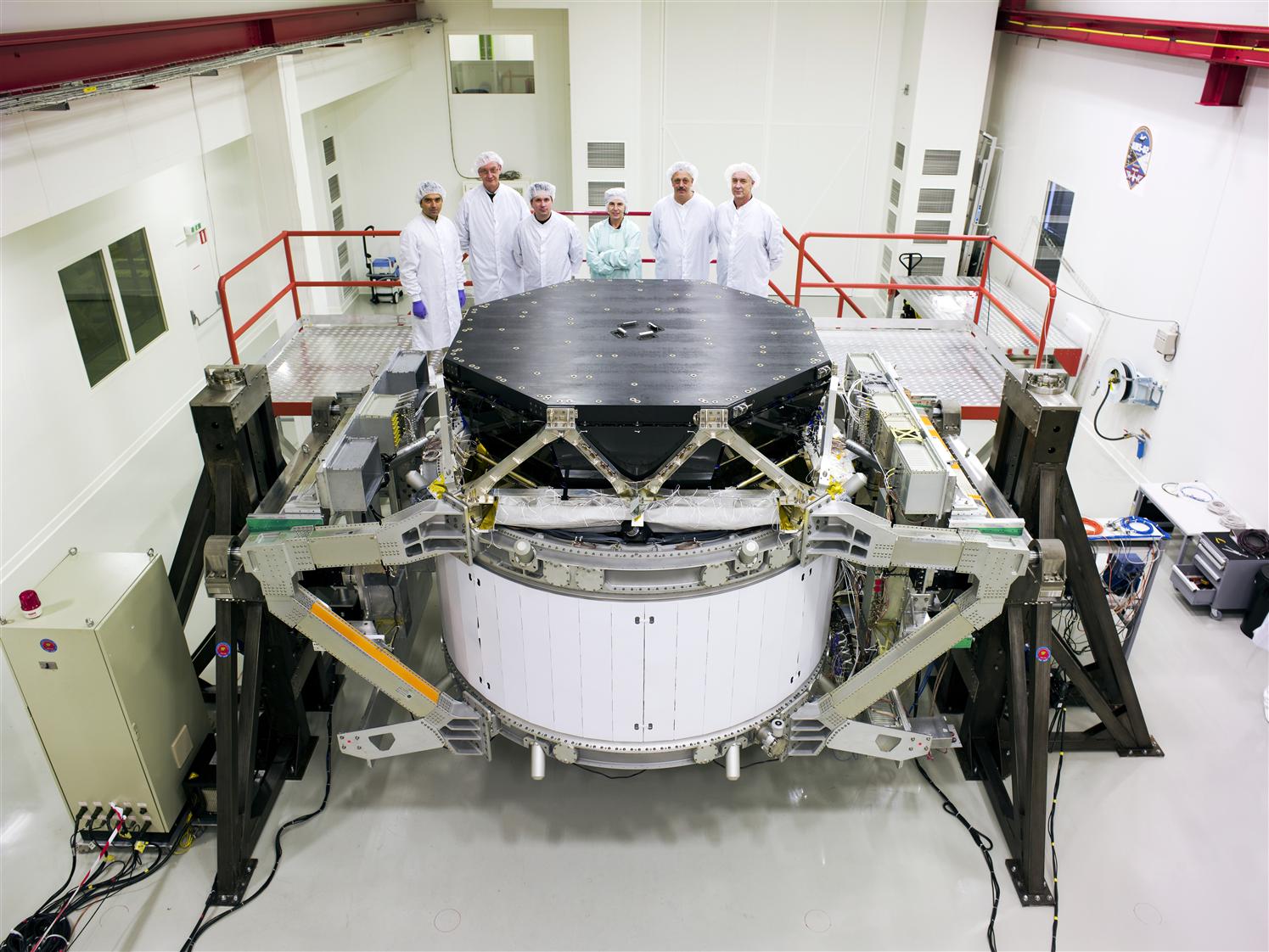From Bologna and Aachen to Out of this World
Pieces of the Anti Matter Spectrometer (AMS) have arrived at CERN from Italy and Germany to be fitted with existing components and tested ready for the voyage of the AMS into space in 2009.
For most components coming to CERN the journey here is the most risky one of their careers and physicists can’t wait to prise open their packaging and check for damage at the earliest opportunity. But last week components arrived at CERN that should be able to handle it. For AMS’s Transition Radiation Detector (TRD) and Time of Flight (ToF) detector, the stop at CERN is just one leg of a journey that will end in space, and a mere formality in comparison with the 3.5g force of take-off it will have to withstand.
The pieces came from the 1st Physics Institute of RWTH Aachen in Germany (TRD) and the Section INFN (the Italian National Institute of Nuclear Physics) at the University of Bologna in Italy (ToF) and have a host of special design features that will allow them to function in the unique conditions of space. The power requirement of the whole of AMS is, for instance, just 2kW; the equivalent of running two irons!
AMS will make a host of measurements with the aim of identifying dark matter and antimatter formed billions of years ago, either in ‘anti-stars’ or at the Big Bang (see ‘A journey into space via CERN’, Bulletin 39 & 40), as opposed to antimatter formed from interactions, as seen on Earth.
The ToF detectors will go either side of the silicon tracker, built mainly in Italy and Switzerland, which is already in place. Their job is to measure the velocity, direction and absolute charge of particles and trigger the other components into taking measurements. "I think of ToF as the eyes of the detector", says Giuliano Laurenti, a senior INFN engineer from the ToF team. "Only when there is a coincidence is a particle seen and measured by the rest of the machine. Even in space there are many particles that we want to filter out." Particularly troublesome are helium nuclei travelling up through the detector, which have the same trajectory through the magnet as anti-helium nuclei coming down. The ToF with a time resolution of 150ps can detect the particles’ direction, even at extremely high speeds, and so filter out those false antimatter signals to better than one part in ten billion.
Protons also present a problem, as they have the same charge as positrons and are much more abundant in cosmic rays. The TRD distinguishes between the two by exploiting their behaviour as they cross the border of materials with different dielectric constants. "When they cross this border, high-energy electrons or positrons are much more likely than protons to emit radiation, allowing us to identify the light particles," explains Georg Schwering of the TRD team. "The probability of a proton being mistaken for a positron is one in a million, when the data of the whole experiment is combined."
Because of the conditions under which the detector will function, the components not only have to be light but must also be adapted to survive vacuum, vibrations and temperature changes of up to 60 ºC without maintenance. "In principle you can’t do anything whilst it’s up there," explains Georg, "so every readout and control component has redundancy built in, so if one piece fails, we can switch to another and so on. The computer itself has three back-ups."
They are now putting the two pieces together in a pre-integration stand and testing the components ready to fit them with the superconducting magnet when it arrives next spring. In autumn 2008 the whole detector will be assembled, totally integrated and systematically tested before being flown on a jumbo jet to Kennedy Space Center at the beginning of 2009. From here it will embark on an adventure that takes it out of this world, and a rocky alpine road will be the least of its worries.
Did you know?
Transition radiation is produced by ultra-fast charged particles as they cross boundaries between materials with different dielectric constants. As the electric field of the particle is different in each material, the particle has to "shake off" this difference as it crosses the boundary. The higher the velocity of a particle, the more of this radiation it emits; as electrons and positrons are light they will have a higher velocity than other particles with the same momentum and so emit more transition radiation. The amount of radiation remains small, so a fleece of 10µm diameter fibres is used to obtain lots of border crossings. The photons and particle track are detected in straw tubes filled with xenon and carbon dioxide gas. Twenty such layers allow the detector to reconstruct a clear track and distinguish between protons and positrons with a high probability. In the Time of Flight, rather than the particles emitting radiation themselves, a solid scintillating material absorbs energy from the particles and re-emits it as photons, producing light in proportion to a particle’s energy that is easy to detect and can be carried along to photomultiplier tubes for amplification. The time difference between passing each ToF, and the order in which it occurs, gives the particle’s velocity and direction.


